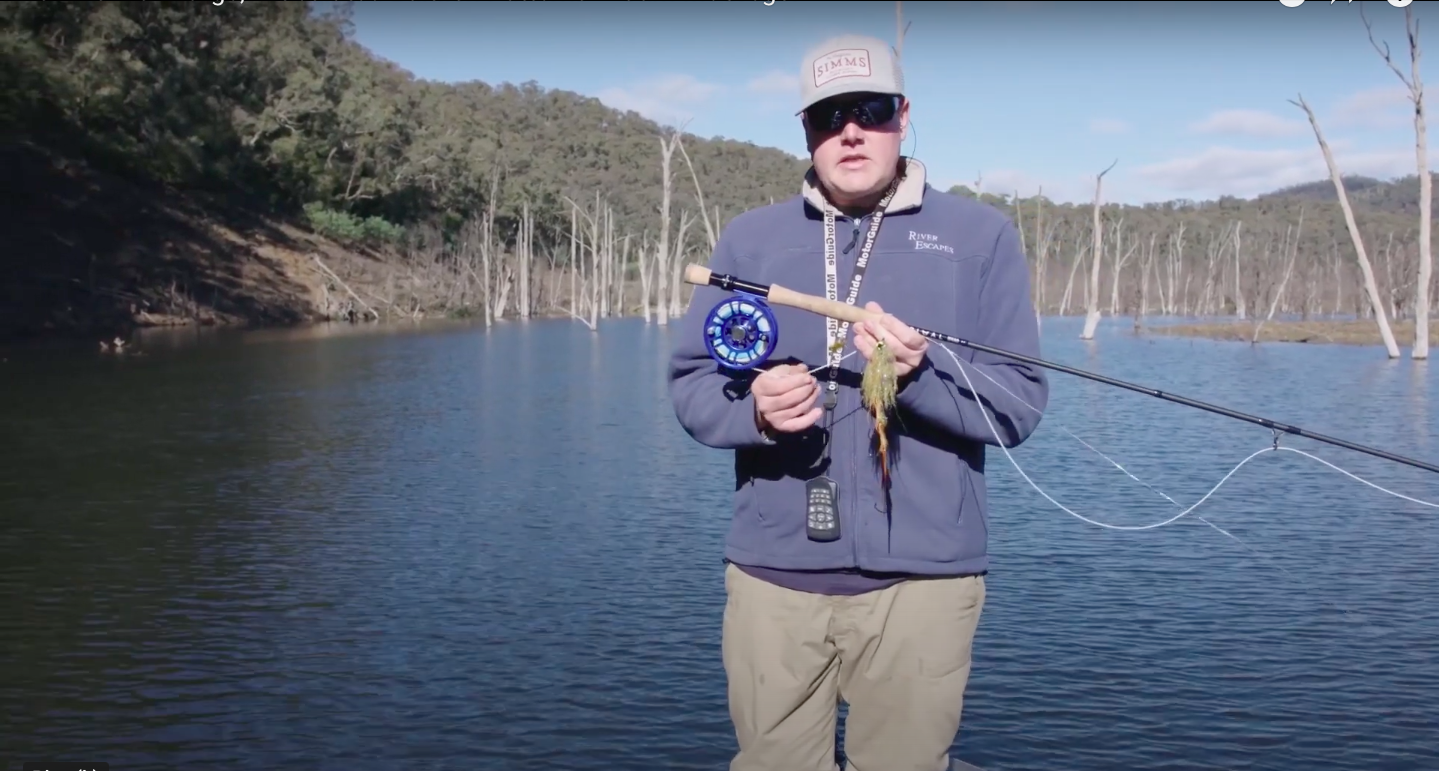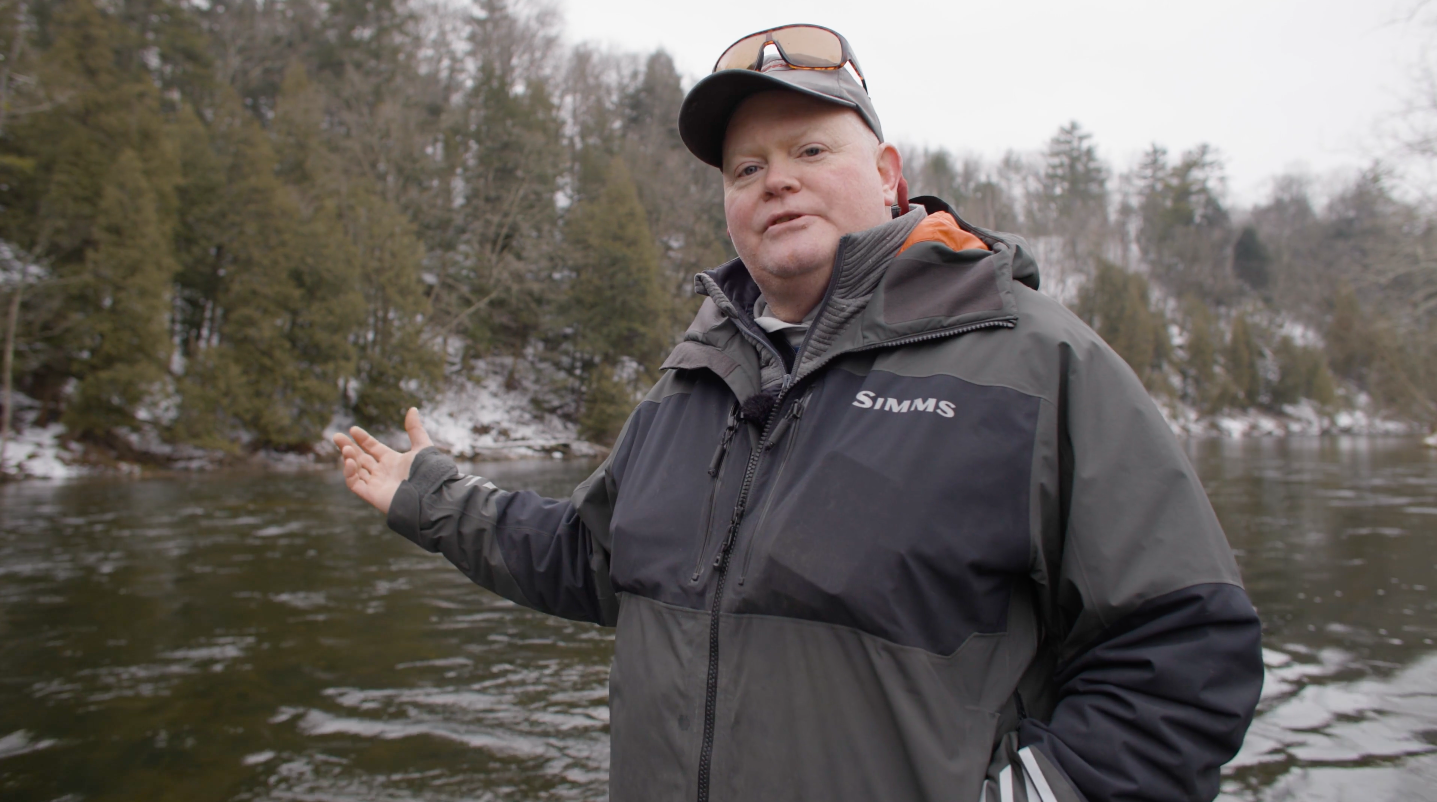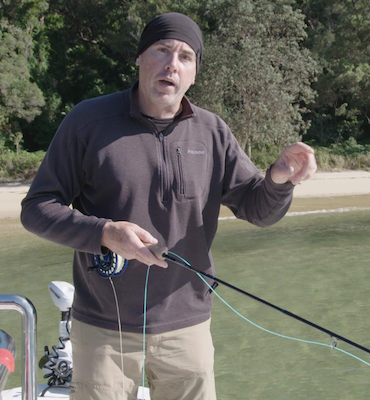Fishing enthusiasts looking to up their game in the world of large, articulated baitfish patterns can find valuable insights from Cam McGregor. Based in South Eastern Australia, he specializes in hunting wintertime Murray Cod, a pursuit that led him to design an effective fly for such endeavors (find that pattern here). In today’s article, we’re going to explore some techniques and wisdom McGregor offers for those passionate about stripping streamers. Let’s dive right in!
Gear Essentials for Big Fly Fishing
If you want to catch fish with big flies, you need the right gear. McGregor recommends a 9 or 10-weight rod, which is strong enough to handle these larger patterns. He also emphasizes the importance of the line, recommending an integrated shooting head style line. This type, with its aggressive front taper, is designed to make it easy to load and cast large flies efficiently. As for reels, McGregor notes that while the specific reel is not critical, choosing a lighter setup can significantly reduce fatigue during a day of repetitive casting.
Leader Construction and Tippet Selection
McGregor likes simple leaders for casting big flies. He recommends using heavier tippets for two reasons: to resist abrasion and to help the fly turn over. With this, a leader made of 60-pound material and a tippet of 40 or 30 pounds is ideal. This setup is durable and effective, especially when fishing structures where fish might hide.
Casting Techniques for Large Flies
Casting large flies is a different ballgame; thus, McGregor’s top tip is to slow down and focus on a smooth acceleration. This technique allows the line to fully straighten out on the back cast, ensuring the large fly is aerodynamically positioned for the next cast. The key is to avoid over-exerting yourself and rushing the cast, as this can cause the fly to lose its trajectory and become tangled.
Moreover, limiting false casting is also crucial. In fact, McGregor advises against excessive false casting, as it can lead to timing issues and fatigue. Instead, he recommends a more efficient approach: fish the fly all the way back to the rod tip, then with minimal false casts, slip a little line out and lay the fly down. In other words, take your time, be smooth, and don’t overdo it.
Enhancing Accuracy and Efficiency
One key tip for accuracy is to run the line through your fingers during the cast. This technique allows for minor adjustments and precise placement of the fly, which is particularly important when fishing near structures. Another efficient method is the water haul cast (water-load), which uses the water’s resistance to load the rod and propel the fly forward, reducing the need for additional false casts.
Retrieve Techniques for Articulated Baitfish Patterns
Perhaps the most important thing to remember is that retrieval is just as crucial as casting in fly fishing. McGregor proposes a few retrieves for articulated baitfish patterns:
- Rip and Pause: This involves a fast strip followed by a pause, keeping the line tight for immediate response to a bite. Variations in speed can trigger strikes, especially during pauses.
- Roly Poly or Continuous Retrieve: Ideal for a uniform swimming action, this method involves tucking the rod under the arm and steadily retrieving the line, mimicking a lure fisherman’s slow roll.
- Rod Tip Bump: Using the rod tip to impart action, this technique creates a side-to-side motion, perfect for deeper water or varying the action of the fly.
It’s important to note that here, each retrieve offers unique advantages and can be adapted based on the behavior of the target fish.
Understanding Fish Behavior and Fly Positioning
The final point that McGregor emphasizes is the importance of understanding where fish are in the water column. He points out that Murray Cod, with eyes located on top of their heads, can feed from the bottom to the top of the water column. This versatility implies that even in deeper waters, a super-fast sinking line is not always essential. Instead, choosing the appropriate line for the depth and adjusting the retrieve accordingly can make a significant difference in success.
Watch it Here
At the end of the day, fly fishing with large, articulated baitfish patterns large, articulated baitfish patterns presents a unique and exciting challenge. By incorporating these tips from Cam, anglers can enhance their skills and enjoy greater success. Whether it’s refining gear choices, mastering casting techniques, or understanding the nuances of different retrieves, each element plays a crucial role in the art of fly fishing.
And for those planning a fishing adventure in Australia, consider booking with McGregor through River Escapes for a hands-on experience with one of the masters of the sport.













